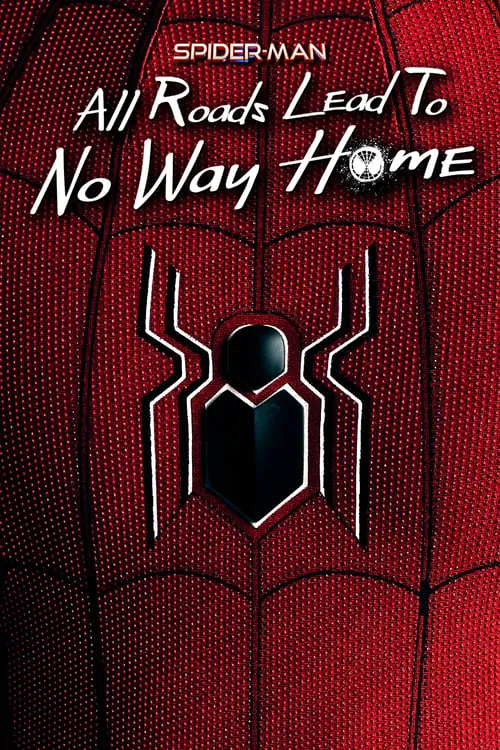Spider-Man: All Roads Lead to No Way Home

Plot
As the lights dimmed in a packed New York City theater, JB Smoove and Martin Starr took to the stage, beaming with excitement. The occasion was a momentous one – the celebration of 20 incredible years of Spider-Man movies, spanning not one, not two, but three distinct eras of cinematic storytelling. The Sam Raimi trilogy, which had kick-started the phenomenon with its 2002 release of Spider-Man, had left an indelible mark on fans worldwide. Marc Webb's duology, consisting of The Amazing Spider-Man and its 2014 sequel, had brought a fresh perspective to the character. And the Jon Watts trilogy, which had concluded with Spider-Man: No Way Home the previous year, had proven that the web-slinger's enduring appeal lay in its ability to be both nostalgic and innovative. As the hosts delved into the nostalgic world of the Sam Raimi trilogy, they couldn't help but reminisce about the pivotal moments that had made audiences connect with Peter Parker (played by Tobey Maguire). The trilogy's blend of action, humor, and heart had captured the essence of the Marvel Comics character. From the iconic battle between Spider-Man and the Green Goblin in the 2002 original to the emotional conclusion of Spider-Man 3, which saw Peter's ego take a hit, the Raimi trilogy had etched its place in cinematic history. Next, the hosts shifted gears to discuss Marc Webb's duology, which had brought a darker, grittier take to the world of Spider-Man. The Amazing Spider-Man (2012) and its sequel had seen Jamie Foxx bring the villainous Electro to life, and Shailene Woodley had played Mary Jane Watson in a twist on the classic role. The Webb movies had also delved deeper into Peter's relationships, particularly his romance with Gwen Stacy (played by Emma Stone), and his struggles as a teenager with great responsibilities. As the celebration transitioned to the Jon Watts trilogy, memories of the stunning visual effects, coupled with the emotional resonance of the trilogy's conclusion, flooded the audience's minds. Spider-Man: No Way Home had cleverly brought together multiple universes, bringing the entire universe of Spider-Man to tears. In 2002, Tobey Maguire, Kristen Dunst, and Willem Dafoe reprised their roles from the Sam Raimi trilogy as the MCU and the Sam Raimi universe blended together in a way that captivated the audiences worldwide to see these characters return, as well as Andrew Garfield's take on the web-slinger from the Marc Webb duology and Tom Holland, the young actor who had become synonymous with the role in the MCU. JB Smoove and Martin Starr reflected on Tom Holland's evolution as Spider-Man throughout the trilogy, from the energetic, youthful enthusiasm of Spider-Man: Homecoming to the more self-assured, confident hero in Spider-Man: Far From Home. The conversation also touched upon the themes of homecoming, family, and the concept of identity, all of which were woven throughout the trilogy. The culmination of the trilogy, Spider-Man: No Way Home, had taken the franchise to uncharted territories, bringing together characters from different universes, and tackling the notion of responsibility, loyalty, and self-discovery. Throughout the celebration, the audience was treated to an array of nostalgic clips, interviews, cast appearances, and behind-the-scenes anecdotes from the making of each trilogy. Martin Starr, who had played James Schwartz in the Jon Watts' Spider-Man: Homecoming, offered an intimate perspective on the set of the MCU's duology, speaking about the camaraderie among the cast members. Meanwhile, JB Smoove reminisced about hosting various Spider-Man screenings over the years, highlighting the consistent enthusiasm and passion among fans. The evening concluded with a spectacular montage of the most memorable moments from the 20-year history of Spider-Man movies, accompanied by an awe-inspiring score that left the audience on the edge of their seats. JB Smoove and Martin Starr expressed their deepest gratitude to fans for their unwavering support, acknowledging that the Marvel Cinematic Universe had become an integral part of contemporary pop culture. As the audience filed out of the theater, still buzzing with nostalgia and excitement, the realization dawned that Spider-Man: No Way Home was more than just a movie – it was a culmination of two decades of storytelling, filled with moments that would leave fans smiling for years to come. As they made their way into the night, clutching their Spider-Man memorabilia and reminiscing about the incredible journey they had witnessed, one thing was clear – the web-slinger's legacy was far from over.
Reviews
Recommendations




